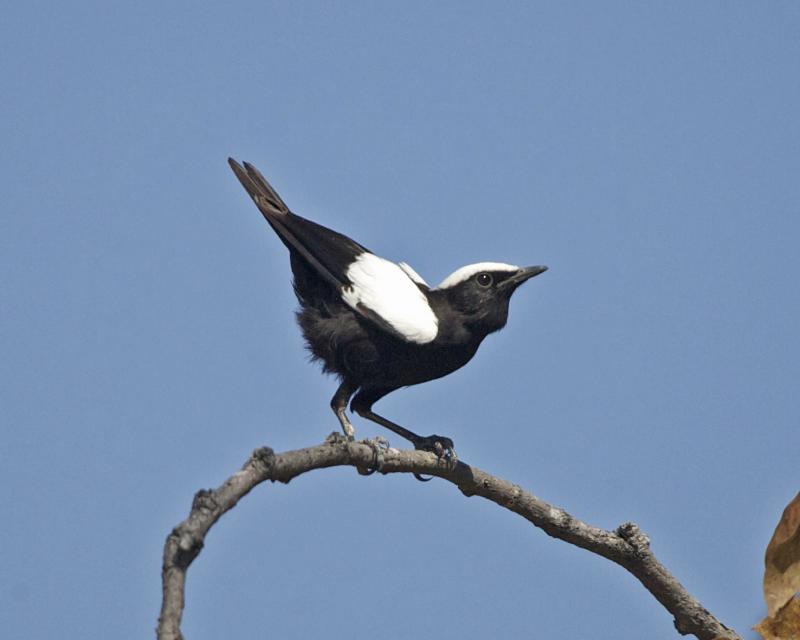Arnot's Chat on:
[Wikipedia]
[Google]
[Amazon]
Arnot's chat (''Myrmecocichla arnotti''), also known as the white-headed black-chat, is a species of bird in the chat and flycatcher family Muscicapidae. The species is found in southern Africa from Rwanda and Angola to South Africa.
 Arnot's chat ranges in size from and weighs around . The
Arnot's chat ranges in size from and weighs around . The
Taxonomy
The species was described by Henry Baker Tristram in 1869 based upon a specimen collected at Victoria Falls in modern-day Zimbabwe, as ''Saxicola arnotti''. Tristram wrote that he named the species after the collector, a Mr. Arnott, but the man was actually named David Arnot. For this reason, it was suggested in 1965 that the name should be spelled ''arnoti'' instead. However, since there is no evidence in Tristram's original paper that the name was misspelled, the rules of the International Code of Zoological Nomenclature mandate that the spelling ''arnotti'' be maintained. Along with thewhite-fronted black-chat
The white-fronted black chat (''Oenanthe albifrons'') is a species of passerine bird in the family Muscicapidae.
It is found in Benin, Burkina Faso, Cameroon, Central African Republic, Chad, Democratic Republic of the Congo, Ivory Coast, Eritrea, ...
this species is sometimes separated into the genus ''Pentholaea''. The species contains two subspecies, ''hartertii'', which is found in Angola, and the nominate, which is found across the rest of its range. A third subspecies, ''collaris'', is now usually considered a separate species, the Ruaha chat
The Ruaha chat (''Myrmecocichla collaris'') is a species of bird in the family Muscicapidae. It is found in western Tanzania, eastern Rwanda, Burundi, and northern Zambia. Its natural habitats are dry savanna, subtropical or tropical dry lowland ...
. This species is indistinguishable from Arnot's chat in male birds but has different plumage
Plumage ( "feather") is a layer of feathers that covers a bird and the pattern, colour, and arrangement of those feathers. The pattern and colours of plumage differ between species and subspecies and may vary with age classes. Within species, ...
in females, a difference that has mostly been overlooked for over a century.
Habitat
Arnot's chat is most commonly found in healthy stands of miombo and mopane woodland. It also occurs at lower densities in other kinds of open woodland with little herbaceous cover, and very rarely near buildings. It generally occurs from sea level to . The species is generally not migratory, but is presumed to undertake some localized wandering.Description
 Arnot's chat ranges in size from and weighs around . The
Arnot's chat ranges in size from and weighs around . The plumage
Plumage ( "feather") is a layer of feathers that covers a bird and the pattern, colour, and arrangement of those feathers. The pattern and colours of plumage differ between species and subspecies and may vary with age classes. Within species, ...
of the adults is sexually dimorphic; the male of the nominate race is overall black with a white crown and a white patch on the wing coverts. The female is similar but with a black crown and a white (tipped with black) throat and neck. The bill and legs are black. Juvenile birds are like the adults but with white feather tips on the crown or throat instead of fuller white. The male of the race ''harterti'' has less extensive white on the wings and a mostly black head with a small area of white on the forehead and above the eye; the white throat of the female is also less extensive than on the nominate.
References
{{Taxonbar, from=Q2226177 Arnot's chat Birds of Southern Africa Arnot's chat Taxonomy articles created by Polbot